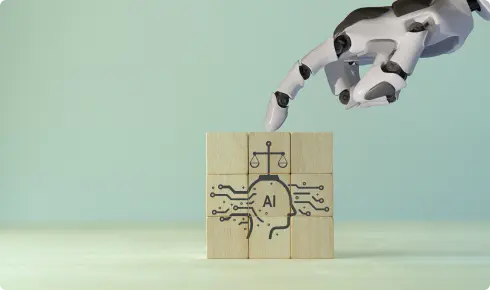In a hyperconnected world, real connection begins within. Through mindfulness and letting go, we rediscover presence, empathy, and the web that already binds us all.
KEY POINTS
- Authentic connection requires connecting with yourself first.
- Mindfulness is the foundation that enables genuine self-awareness and presence.
- Accepting impermanence transforms how we relate to ourselves and others.
We’re more linked than ever and somehow more alone than we’ve ever been.
Our screens pulse with notifications and digital chatter that promise belonging but leave us feeling drained, fragmented, and unseen.
We move faster but not necessarily forward. We communicate constantly, yet we rarely connect.
When I wrote the first edition of Everything Connects a decade ago, I wasn’t crafting another leadership manual. I was tracing something more essential, something that has shaped my journey from studying Eastern philosophy to building businesses. I kept returning to a truth that is as ancient as it is urgent: Everything arises because of everything else.
The Buddha called this truth pratītyasamutpāda (dependent origination). Nothing exists on its own; we are all part of an intricate, complex interdependent web.
When we forget that truth, fragmentation follows. Anxiety rises, collaborationfalters, burnout festers. This isn’t abstract spirituality. I’ve lived it, chasing outcomes and mistaking motion for meaning, all while losing sight of the human pulse.
Modern neuroscience echoes both my own experience and many spiritual traditions on this topic. Research suggests that our brains thrive on connection; for example, practicing empathy strengthens neural circuits that support creativityand problem-solving. When we feel disconnected, the stress response spikes and, over time, weakens the brain regions responsible for emotional regulation.
Science confirms what we instinctively know: Our brains weren’t made for constant digital stimulation but for the slower, richer rhythms of human connection.
The solution isn’t to create more apps and new ways of connecting. Rather, as so often, the best way to approach the future is by encouraging ourselves to wake to the present. We might say that the task is not so much to build a web of connection as it is to inhabit the one we already have.
Interdependence: The Web We Already Inhabit
We are not self-contained units but open systems. Every breath we take, every thought we think, depends on what surrounds us. The language we speak, the ideas we inherit, the people who shape our sense of what is possible all flow into us and through us.
And yet, despite living in this vast web of interdependence, we feel isolated because we’ve lost touch with the most fundamental connection of all, the one with ourselves.
We can meet another person only to the extent that we are in touch with our own experience. Deep listening becomes possible only when we have learned to be still with our thoughts. And authentic presence arises not from performance but from the courage to permit ourselves to be unguarded and attentive.
Mindfulness: The Gateway to Self-Connection
The web of interdependence is always there. But we can perceive and participate in it consciously only when we’re present enough to notice it. And that presence must begin with ourselves.
Mindfulness is often sold as a relaxation tool. In truth, it is revolutionary—a disciplined presence that cuts through illusion and creates the capacity for authentic connection. When we practice mindfulness, we learn to notice our thoughts without being consumed by them, to feel our emotions without being controlled by them, and to recognize our patterns without being imprisoned by them.
Such self-awareness is the foundation of all genuine connection. When we’re present with ourselves, we create the capacity to be present with others.
The Obstacle: Why We Can’t Let Go
The solution seems simple: Be present. So why do we struggle so much to practice it?
The answer lies in attachment.
We cling. We grasp. We hold on to outcomes, identities, expectations, and stories about who we are and who we should be. We grip the future so tightly we can’t feel the present.
When we’re attached, we can’t be present. We’re too busy managing, manipulating, and maintaining. We’re too afraid of loss to fully inhabit the moment. This fear blocks both self-connection and connection with others.
Attachment keeps us at arm’s length from our own experience—and from genuine relationships with others.
Impermanence: Learning to Let Go
The antidote to attachment is accepting the Buddhist insight of anicca—impermanence.
Impermanence teaches us that everything is temporary: our thoughts, our emotions, our circumstances, even our sense of self. This isn’t a reason for despair; it’s an invitation to let go. And when we do let go, when we stop clinging to what must change, we discover that we can be more present to what there actually is.
I’ve learned this in moments of loss and reinvention—shutting down companies, walking away from projects, watching identities I’d built dissolve. Each ending, painful as it was, revealed what wanted to emerge next. Accepting the impermanence of things turned out to be the foundation of growth.
Four Practices for Connecting Within
Here are four practices you can begin today that will help you start being present to the connection with yourself:
- Start with the breath. Spend five minutes each morning simply noticing your breath. No agenda, no improvement, just awareness of breathing in and breathing out.
- Name what you’re holding. Write down one thing you’re gripping too tightly: an outcome, an identity, a fear. Ask: What would happen if I loosened my grip?
- Practice the pause. Before responding in conversation or reacting to news, count three breaths. Notice what shifts in that space.
- Reflect on impermanence. Once a day, notice something that has changed—a season, a relationship, your own mood. Observe without judgment.
Returning to Wholeness
When we’re connected to ourselves—aware, present, unburdened by grasping—we naturally connect more authentically with others. We are more able to recognize that the person across from us is not a means to achieving our goals but instead a living, breathing miracle of existence, and one we are deeply connected to.
We begin to see, in the words of the poet John Donne, that “no man is an island, entire of itself.” And over time, we internalize Donne’s closing lines, beautifully expressive of the ancient Buddhist truth of dependent origination:
“Any man’s death diminishes me,
Because I am involved in mankind.
And therefore never send to know for whom the bell tolls;
It tolls for thee.”
[Photo: YURIMA/Adobe Stock]
Original article @ Psychology Today.
















